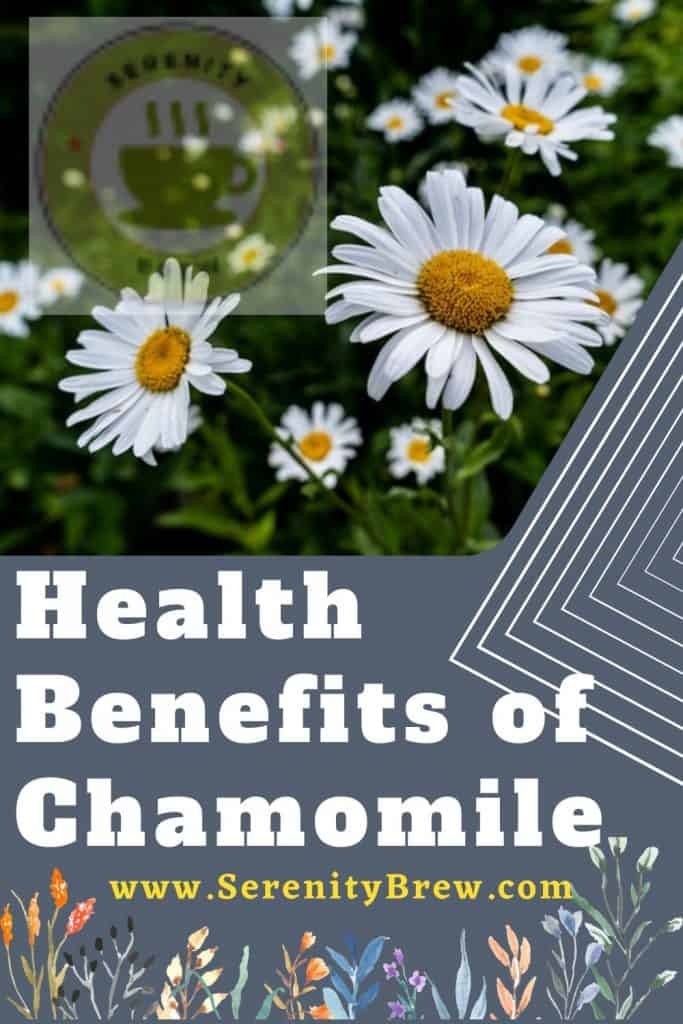
Chamomile is one of the most widely drunk infusions throughout the world and it is easy to understand why.
Popular medicine has used it since time immemorial to relieve digestive problems, skin problems or simply as a relaxant. In modern times, chamomile is a common ingredient in cosmetics, and its essential oils are used in perfumery.
Health benefits of chamomile
Natural medicine has been touting the benefits of chamomile for years, but what truth do these beliefs have?
1. Improved sleep
Chamomile contains apigenin, an antioxidant that may help reduce insomnia. A study found that postpartum women who drank chamomile for two weeks improved their sleep quality compared to those who didn’t.
Furthermore, research found that people who consumed 270 mg of chamomile extract daily for 28 days had fewer awakenings and fell asleep faster than the control group.
Although science must continue to study this field, it seems that having a cup of chamomile before going to sleep can help us relax, fall asleep and stay asleep.
2. Blood sugar control
Different studies have observed that those who regularly consume chamomile would have a lower amount of sugar in the blood than those who do not ingest it. For this reason, it is believed that the anti-inflammatory properties of chamomile help maintain the good health of the pancreas (an organ that produces insulin, a hormone that transports sugar to the interior of the cells where it is used as energy).
3. Menstrual pain relief
Chamomile is supposed to help naturally increase glycine levels in the body.
This substance is a muscle relaxant and therefore, it would be useful to control menstrual cramps. Research on this has not yielded conclusive data, but an improvement in menstrual symptoms has been observed in women who have regularly ingested chamomile tea.
4. Improves digestion
Popular medicine uses chamomile infusion to treat gas, heavy digestion and relieve nausea. Due to its anti-inflammatory effects, this infusion is especially effective for dispelling gas, relaxing the muscles that circulate food through the intestines and calming the stomach.
5. Regenerates damaged tissues
Chamomile creams and ointments are used to help regenerate tissue damaged by burns, for example. Without going any further, among the benefits of this herb the ability to help heal the skin and even canker sores.
A common use of chamomile is to treat aging and damaged skin blemishes. In fact, this plant is a common ingredient in skin creams.
6. Effects on cancer
Some laboratory studies have suggested that the antioxidant apigenin might help fight cancer cells, especially those of the breast, digestive tract, skin, prostate, and uterus. Future research is necessary to determine its efficacy.
Chamomile infusion is delicious, easy to prepare and can provide your body with a good dose of antioxidants. Do not hesitate to include it in your diet to benefit from its health properties.
Note : Remember that infusions can be a complement to help you improve your health but at no time do they replace your doctor’s instructions.
7. Disinfectant and antiseptic properties
Have you ever washed your eyes with chamomile? It is a traditional remedy widely used in cases of conjunctivitis due to its disinfectant properties.
It can also be used on the skin to eliminate bacteria, it is useful for cleaning pimples and acne.
8. Good for hair
Continuing with topical uses, chamomile is also useful for calming itchy scalp and eliminating dandruff thanks to its anti-inflammatory activity.
On the other hand, washing your hair with chamomile can help lighten its tone naturally.
9. Immune System Enhancement
There are studies that link tea consumption with better markers of immune system health. Some scientists believe that this relationship is due to polyphenols, compounds also present in chamomile.
A study the effects of regular consumption of chamomile. The sample was small, with only 14 participants, but there was an increase in hippurate and glycine, which have been associated with antibacterial activity.
While more study is needed on this topic, drinking a few cups of chamomile tea per day might boost your immune system.
Chamomile plant
Did you know that chamomile can reach 60 cm in height? It is a plant native to Africa, the Balkans and western Asia. However, it is currently cultivated in many other countries, such as Spain, Argentina or Iran.
It is a member of the Asteraceae family and has two common varieties: German chamomile (Chamomilla recutita) and common or Roman chamomile (Chamaemelum nobile).
Egyptians and Romans have known its health benefits since ancient times. Today, chamomile is a common infusion in the cupboards of many families, who consume it for its properties or simply for its pleasant taste.
Chamomile infusion
In some places the term tea is used as a synonym for infusion. Although you may have heard chamomile tea, it is not part of the family of teas. It is therefore a herbal infusion that does not contain caffeine at all, unlike teas.
Chamomile infusion is prepared using the flowers of this plant. These flowers have a high content of flavonoids and terpenoids, known antioxidants that fight free radicals that can affect our cells, thus protecting us from possible chronic diseases.
Preparation
- Heat a cup of water to 85°C. Prevent it from boiling.
- It is easy to find this infusion in sachets in any supermarket, but also in herbal shops in the form of dried flowers in bulk. The tastiest version of this infusion will come from fresh flowers, but it will be hard to come by unless you grow your own plant.
- Place the chamomile flowers in a metal strainer for infusions. A couple of teaspoons will suffice. Pour the water over them.
- Let infuse for about 6 minutes.
- Remove the chamomile flowers. If you wish, you can sweeten with a teaspoon of honey.
You can also consume this infusion cold. The steps to follow would be the same but then you should place it in the refrigerator or add ice. You can also prepare the infusion with cold water. In this case, the rest time should be much longer, at least 5 hours.
Finish your meals with a good infusion

Why don’t you replace the coffee after eating with an infusion? Chamomile is a great way to end a meal, especially a heavy one.
Try it! Its properties to facilitate digestion make it a great and relaxing way to escape caffeine and take care of your body.
